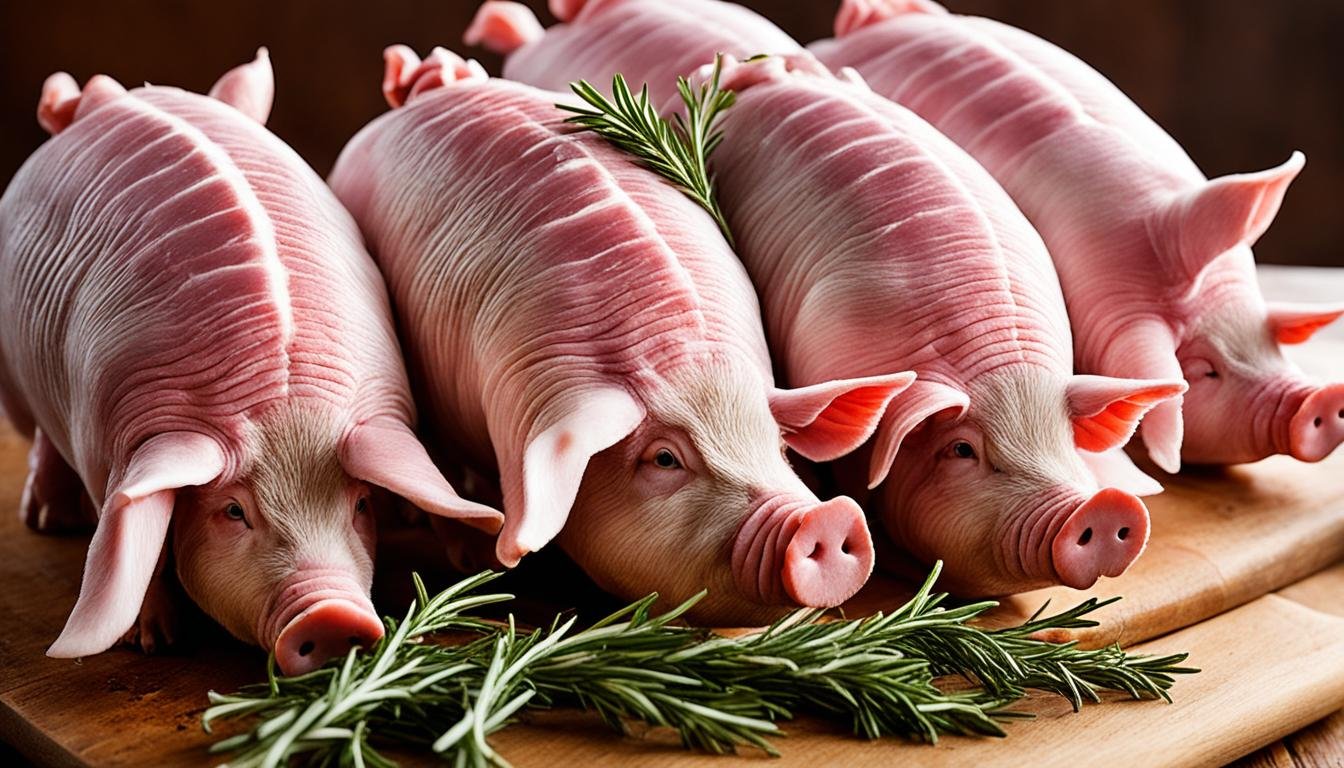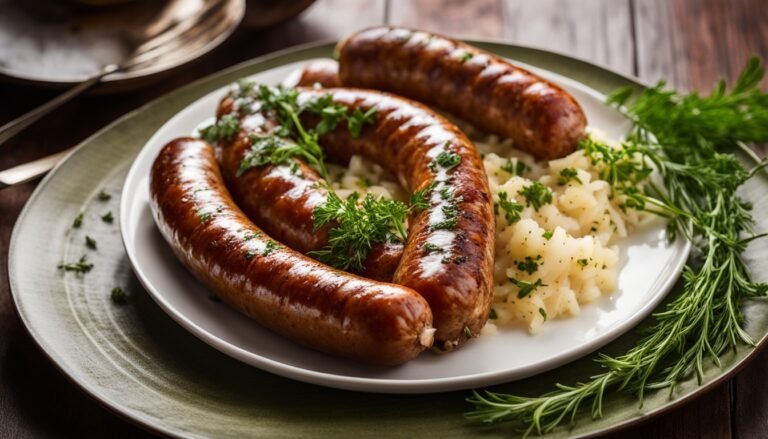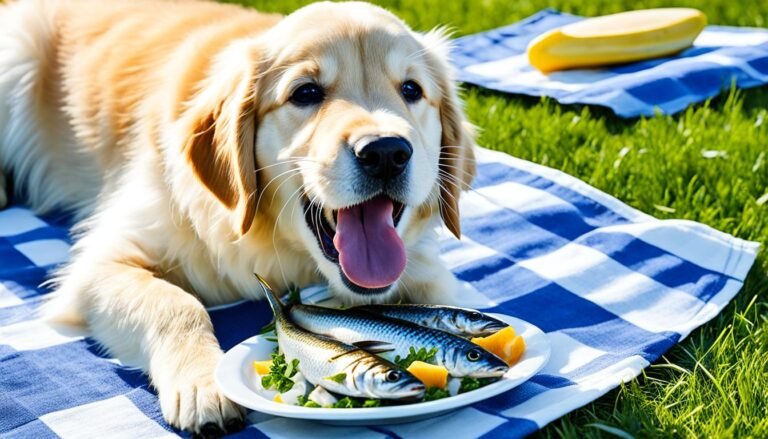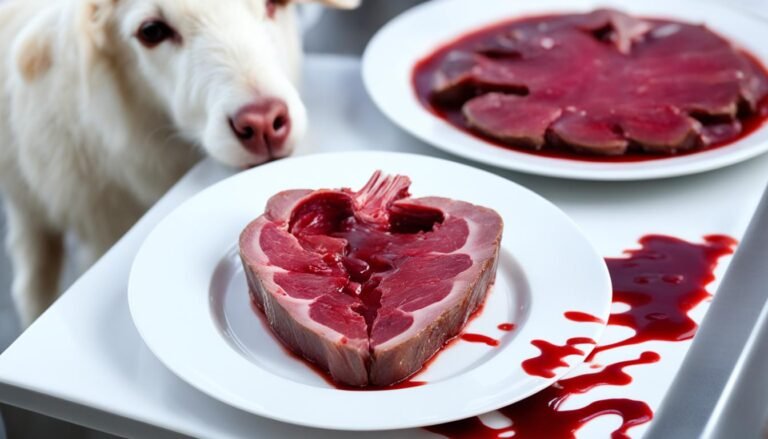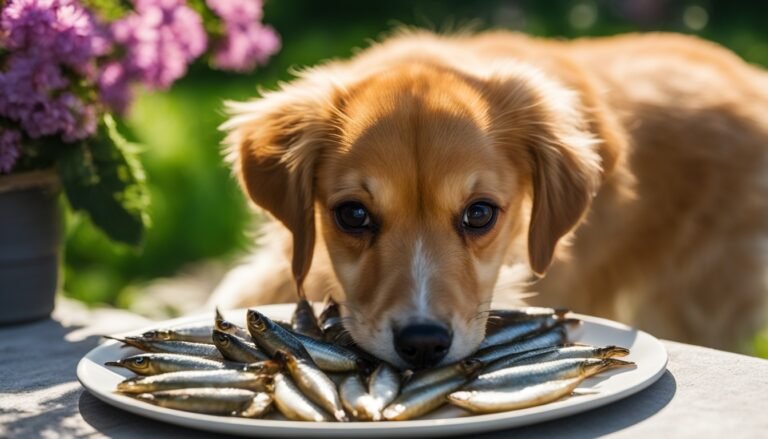Can Dogs Eat Pigs’ Trotters? A Guide for Pet Owners
Did you know that around 1.5 million tonnes of pigs’ trotters are made every year? This huge number shows how many are available, making them a natural treat for dogs. They are common in many places, but you should know the good and bad points before giving them to your dog.
Pigs’ trotters come from the pork industry and are a full pig foot. This part is from the ankle down. They are cheap and good for the planet. These treats can be raw or air-dried. The drying makes them last longer and lowers the risk of bad bacteria. Here, we will help you figure out if your dog can eat pigs’ trotters.
Key Takeaways
- Pigs’ trotters are a by-product of the pork industry, making them a sustainable and affordable treat for dogs.
- Pigs’ trotters can provide joint, dental and mental health benefits for canines, but also pose risks such as choking hazards and gastrointestinal issues.
- It’s crucial to introduce pigs’ trotters slowly, consider your dog’s size and breed, and always supervise them when feeding this treat.
- Pigs’ trotters should be fed as an occasional treat, not as a regular part of your dog’s diet, and balanced with their overall nutritional needs.
- Proper handling and preparation of raw pigs’ trotters is essential to prevent the risk of bacterial contamination.
What Are Pig’s Trotters?
Pig’s trotters, or pig feet, are from the pork industry. They come from the pig’s foot and part of the leg. This makes them good for the environment and cheap to buy. You can get them fresh or dried. Drying them makes them last longer.
Raw vs. Cooked Trotters
It’s best to give pigs’ trotters to dogs raw. Cooking them makes the bones unsafe. They can break into sharp pieces. This could hurt your dog’s mouth or stomach. So, always give them raw pig’s trotters.
Where to Buy Pig’s Trotters
Your local butcher might sell fresh pigs’ trotters. If you can, choose ones that are organic. It’s safer for your dog. If you don’t want to feed them raw, you can find air-dried trotters at pet shops. Just be careful to read the labels. Pet food rules are not the same as those for people’s food.
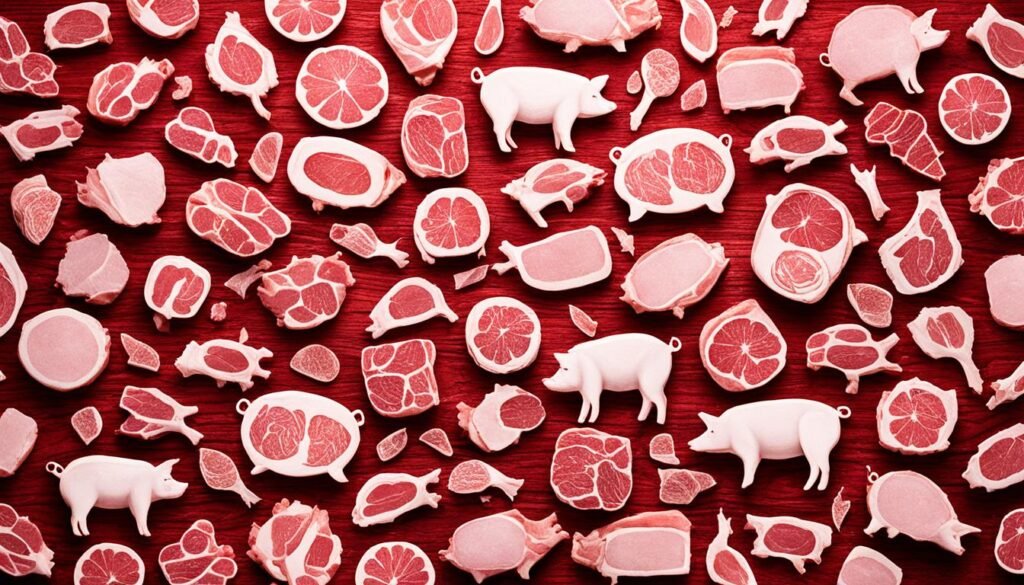
Benefits of Feeding Pigs’ Trotters to Dogs
Pigs’ trotters have lots of collagen and natural oils. These are really good for your pet’s joints and skin. They help keep joints strong and skin healthy.
Joint and Skin Health
Eating pigs’ trotters is good for your dog’s teeth. The chewing action helps clean their teeth. This stops tartar and gum disease.
Dental Hygiene
Pigs’ trotters also give dogs something to work on. Since they’re tough, dogs take longer to eat them. This keeps dogs thinking, reducing stress.
Mental Stimulation and Enrichment
These treats are full of protein and important nutrients like iron. They’re a bit fatty but make a delicious snack. The main nutrients are 32% protein, 9% fibre, and 13% moisture.
Nutritional Value
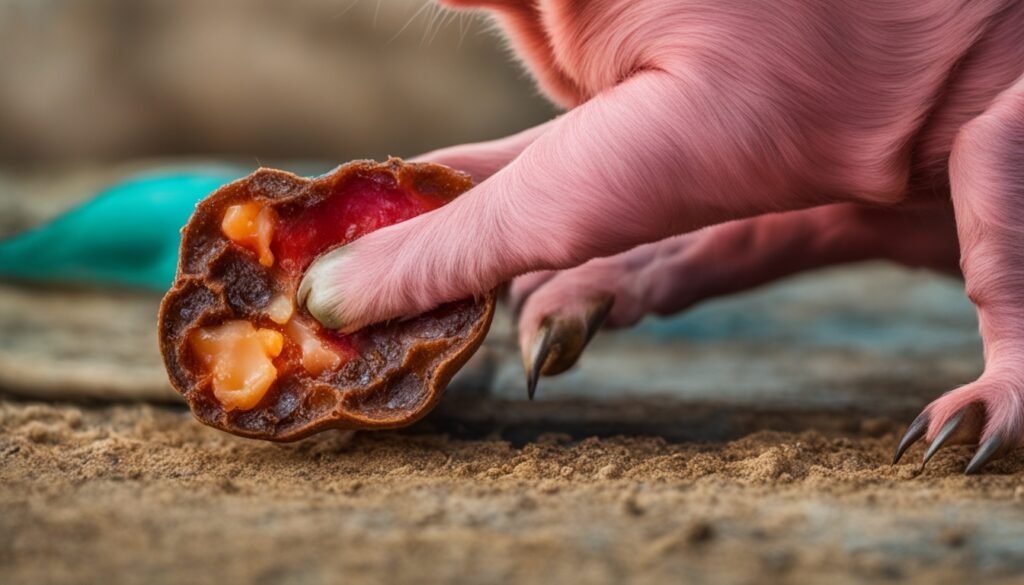
Risks and Precautions
Pigs’ trotters can be a real hit with dogs. But, there are some important things to know. This info helps you choose wisely for your pet.
Choking Hazards
Trotters are hard and bony, making them risky for some dogs. Smaller breeds might choke on them. It’s safer to give them to medium and bigger dogs.
Gastrointestinal Issues
Some dogs struggle to digest trotters. This can hurt their stomach and cause tummy troubles. Dogs with stomach problems should avoid them.
Pancreatitis Risk
Too much fat in trotters can be bad news. It might lead to pancreatitis. Certain breeds and dogs with prior pancreas issues are at higher risk.
Bacterial Contamination
Raw trotters might contain nasty bacteria. This can make dogs and even their owners very sick. Look out for symptoms like vomiting and diarrhoea.
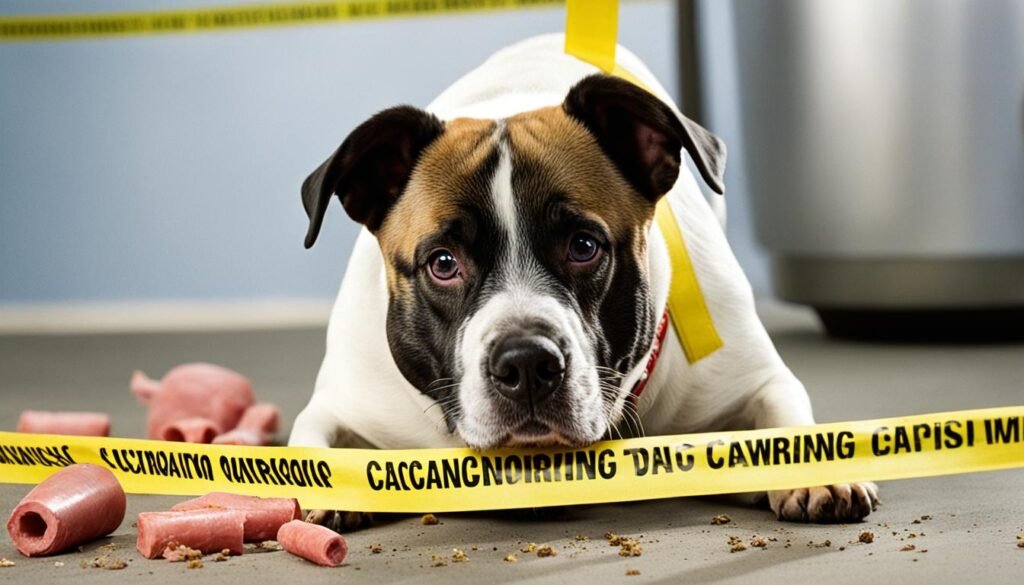
can dogs eat pigs trotters?
Pigs’ trotters are part of many cultures and are now a favourite pet treat. But, before you offer them to your dog, know the good and bad. These treats can help your dog’s joints, teeth, and mood. Yet, there are risks like choking and tummy problems. Make sure to give them a little at a time and watch how they do.
Feeding Guidelines
Pigs’ trotters should not be the main food for your dog. They have lots of calories and fat. It’s best to give your dog one trotter every 1-2 weeks as a special treat. Adjust the size based on your dog’s size; larger dogs can have bigger trotters.
Portion Sizes and Frequency
Feeding pigs’ trotters to your dog should be done carefully. They are high in calories. Give your dog one trotter every 1-2 weeks as a treat. How big the trotter is should match your dog’s size.
Dog Breeds and Sizes
Medium to extra-large dogs are best for pigs’ trotters. They might be too big and hard for small dogs. Big chewers like Labradors and German Shepherds can have them safely. But, toy and small breed dogs should not eat them.
Balancing the Diet
Remember, pigs’ trotters are high in calories and fat. They should only be an occasional treat. If your dog should not gain weight, other treats might be better. Always watch how many treats your dog gets.
Preparing and Serving Pigs’ Trotters
If you buy raw pigs’ trotters, safety is key. Thaw them slowly. Use the fridge or cold water. This stops bad germs. Always wash your hands well when handling them.
Thawing and Handling Raw Trotters
Slowly thawing is very important. Use the fridge or cold water. This stops germs like salmonella or campylobacter. Don’t forget to keep hands, tools, and surfaces clean to avoid spreading germs.
Supervising Your Dog
Watch your dog closely when they eat trotters. Choking and blockage can be risky. Don’t leave your dog alone with a trotter. Some dogs might want to protect their food. Keeping an eye on them helps prevent problems.
Conclusion
Pigs’ trotters can make a great snack for dogs. They help with joint health, keep teeth clean, and offer mental workouts. But, it’s important to know the risks, such as choking and sickness. Always feed them with care, looking at the size of your dog.
Knowing the good and bad about pigs’ trotters can help you choose wisely for your pet. It’s all about keeping them safe and healthy. So, think carefully before giving them to your dog.
Think of pigs’ trotters as a special treat, and not part of your dog’s main food. By being careful, you can share these snacks safely. Remember, it’s just an extra fun food for your pet.
